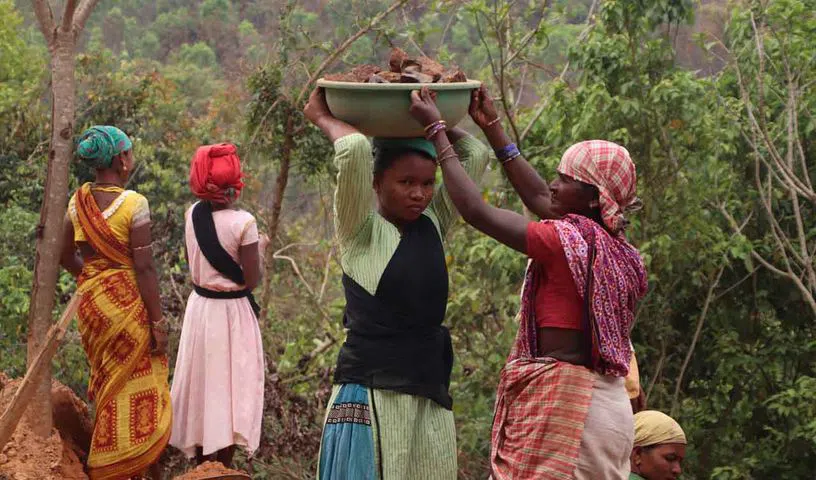Opinion: Gender Budgeting, a step forward, but not enough

Union Budgets should shift focus from women’s welfare (Sambal dimension) to women’s economic autonomy (Samarthya)
By Ashraf Pulikkamath, Jadhav Chakradhar
The Gender Budget Statement for FY 2025-26 marks a significant milestone in India’s commitment to gender-responsive governance, witnessing an impressive 20% increase in allocations compared with the previous fiscal year.
With a total outlay of Rs 4,49,028.68 crore, constituting 8.86% of the Union Budget, this represents a 466.54% rise from FY 2015-16. The hike signals a progressive shift towards women’s development and empowerment, aligning with the government’s vision of women-led growth. However, beneath these promising figures lie critical concerns regarding the effectiveness and targeting of these allocations.
Evolution in India
Gender budgeting was formally introduced at the central level in 2005-06 following the recommendations of the Ashok Lahiri Committee Report (2001). Unlike a separate budget for women, it integrates gender-responsive allocations within existing schemes to ensure equitable resource distribution.
Over the past two decades (2005-25), gender budgeting has been institutionalised across national and sub-national levels, contributing to improvements in women’s empowerment, safety, health and economic inclusion. The Ministry of Women and Child Development (MWCD) is the nodal agency, with gender budgeting housed under the Samarthya sub-scheme of Mission Shakti. The categorisation of gender budgets into Part A (100% women beneficiaries), Part B (30-99% women beneficiaries) and Part C (less than 30% women beneficiaries) enables a structured approach to fund allocation.
Notable Increases
The Samarthya sub-scheme under Part A has witnessed a remarkable 150% hike, rising from Rs 953.74 crore (FY 2024-25, Revised) to Rs 2,396 crore (FY 2025-26). Similarly, overall, Part A allocations grew 30%, Part B by 16% and Part C by 15%, reinforcing a commitment to gender-sensitive spending.
Some sectoral ministries have also seen substantial increases. For instance, allocations under the Ministry of New and Renewable Energy and the Ministry of Power have surged, reflecting an effort to integrate gender considerations into traditionally male-dominated sectors. However, whether these funds are backed by robust gender-disaggregated data and effective implementation frameworks remains an open question.
Stagnation in Crucial Areas
Despite the rise in total allocations, stagnation in key sectors raises concerns. The Ministry of Labour and Employment’s gender budget saw a marginal increase from Rs 908.25 crore (FY 2024-25) to Rs 922.16 crore (FY 2025-26) — a 1.5% rise, failing to address women’s low labour force participation.
Similarly, allocations under the Ministry of Micro, Small and Medium Enterprises (MSMEs) rose modestly from Rs 2,466.57 crore to Rs 2,821.08 crore despite MSMEs being a critical pathway for women’s entrepreneurship.
Additionally, the Ministry of Skill Development and Entrepreneurship has not seen a proportionate increase, raising concerns about whether women’s upskilling is receiving adequate attention.
Grey Areas
Including Part C allocations, now amounting to Rs 16,821.28 crore, expands gender sensitivity across broader budget lines. However, a major share of this category goes to PM Kisan Samman, which, while benefiting women farmers, does not directly empower them economically. Moreover, the categorisation of specific large-scale schemes as gender-focused is questionable.
For instance, the Pradhan Mantri Awas Yojana (PMAY) — which rose from Rs 15,170 crore to Rs 23,294 crore under Part A — prioritises women but is not exclusively women-centric. Similarly, the Prime Minister’s Employment Generation Programme (PMEGP) under Part B lacks detailed gender-based targeting. Conversely, programmes like the Mahatma Gandhi National Rural Employment Guarantee Act (MGNREGA) appear underreported in the gender budget.
The Rs 40,000 crore allocated under Part B accounts for 46% of total MGNREGA funds, while government data indicates 60% of beneficiaries are women — suggesting a possible discrepancy in gendered reporting.
Underlying Challenge
While the gender budget prioritises practical gender needs, it remains rooted in the Women’s Development paradigm rather than the women-led development approach introduced in 2024. The current allocations mainly focus on basic survival, safety and welfare, reinforcing women’s roles within existing social structures rather than fostering structural transformation.
Collecting detailed data on beneficiaries of ongoing gender budgeting schemes will help improve monitoring
Although this approach supports poverty alleviation and economic inclusion, it risks relegating women to passive beneficiaries rather than empowering them as active participants in economic and social change.
Ultimately, gender budgeting policies should promote women’s economic autonomy (gender mainstreaming in the economy). Studies and empowerment theories have demonstrated that gender budgeting has the potential to achieve this goal. Therefore, Indian Budgets should shift focus from women’s welfare (Sambal dimension) to women’s economic autonomy (Samarthya dimension).
Intent and Impact
The Gender Budget 2025-26 demonstrates a commendable financial commitment to women’s development, with rising allocations and broader inclusion of gender perspectives across schemes. However, stagnation in critical sectors, questionable scheme categorisation and the dominance of welfare-based allocations highlight the gaps between intent and impact.
For gender budgeting to truly foster empowerment, it must move beyond incremental increases in funds and towards a transformative framework — one that prioritises economic autonomy, leadership, and gender mainstreaming at all levels of policymaking. A key element of this transformative framework is the development of gender-disaggregated data, which has been historically lacking. To begin with, collecting detailed data on beneficiaries of ongoing gender budgeting schemes would help bridge this gap and improve monitoring.
Additionally, deriving gender-disaggregated insights from large datasets like the NFHS can be beneficial in the long run. Incorporating this gender-disaggregation approach into future censuses and large databases is essential for meaningful progress.







